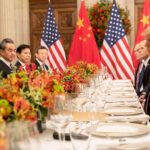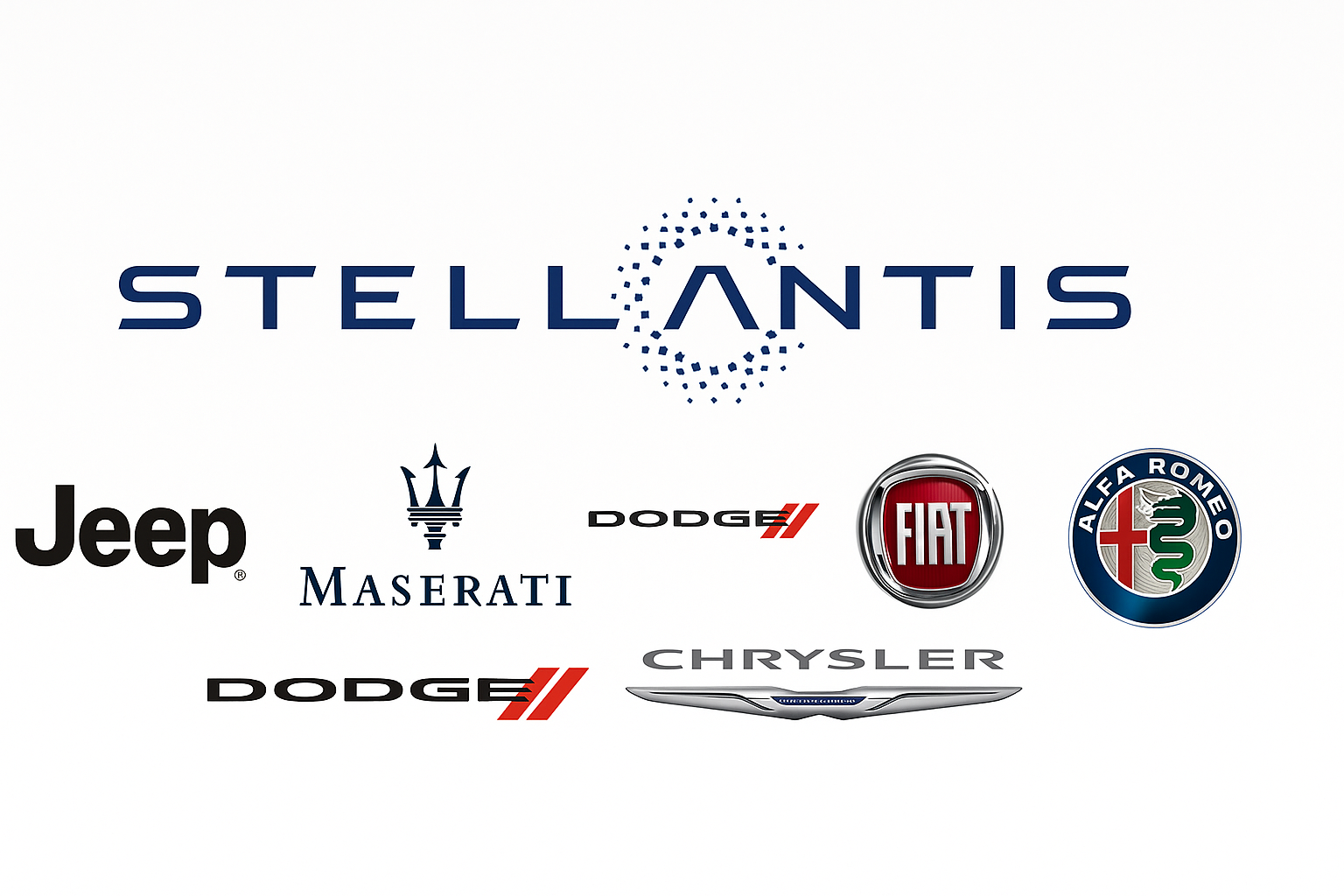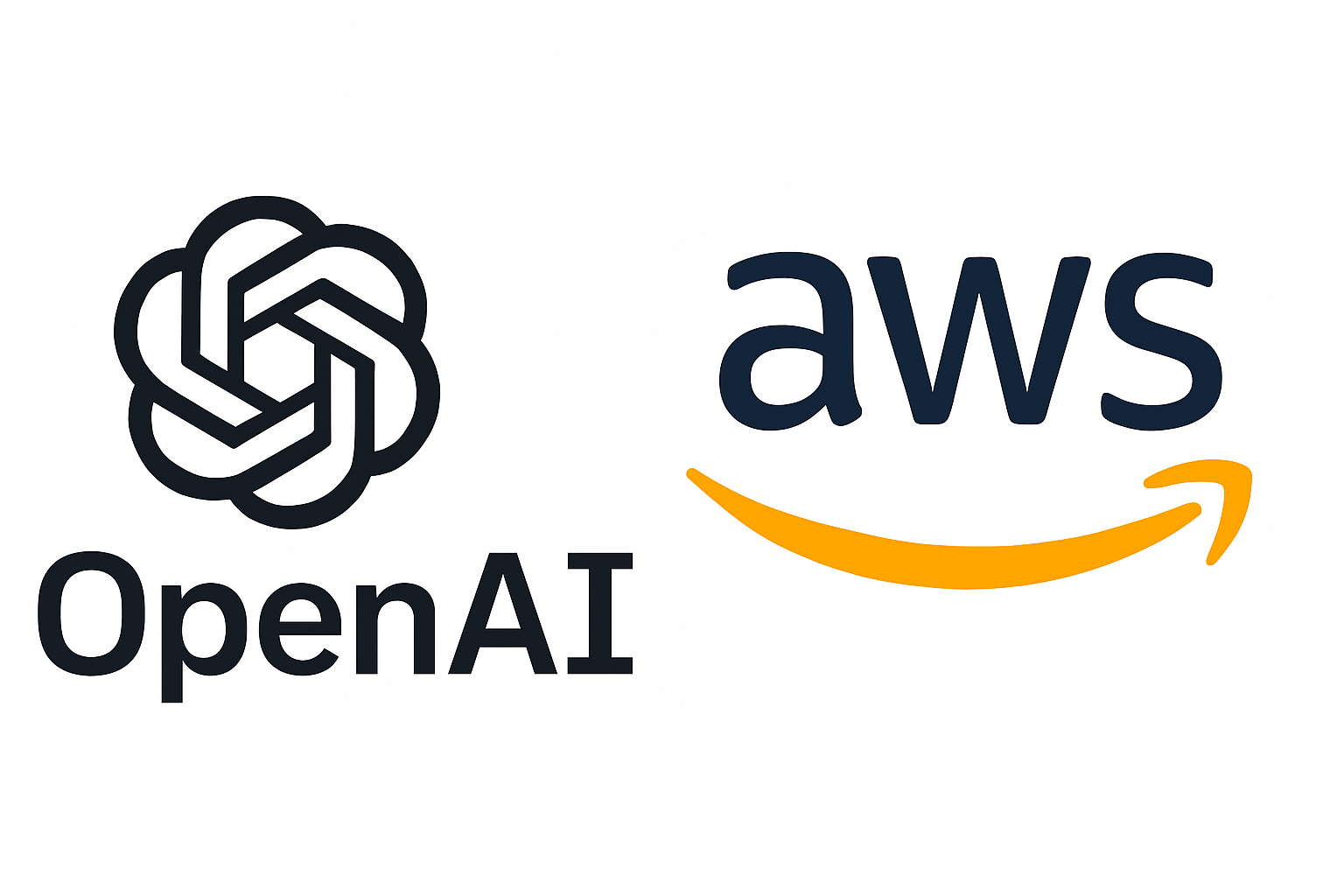Non classé
Reshaping the Rare Earth Supply Chain: How Trump’s Asia Agreements Are Rewiring Global Logistics
Published
1 semaine agoon
By

Donald Trump’s Asia tour this week may be remembered less for its political theater and more for its impact on the rare earth supply chain.
In a series of visits to Japan, Malaysia, Thailand, and most importantly a meeting with Chinese President Xi Jinping, Trump signed or framed agreements that could reset the logistics architecture for critical minerals.
According to Bloomberg and Reuters, the trip produced a dual-track result: a “rare-earth framework” between Washington and Beijing to stabilize immediate supply, and a diversification drive through new partnerships with Malaysia, Thailand, and India.
The logistics and transport implications are significant. New ports, new refineries, and new maritime corridors are envisioned, which if implemented could redraw the map of how the world’s most strategic materials move from mine to market.
Rare Earths: The Hidden Engine of Modern Supply Chains
Rare earth elements, like neodymium, dysprosium, and terbium, are foundational to the modern economy.
They power the magnets in electric vehicles, the servos in guided missiles, and the turbines of offshore wind farms.
However, for a long time, China has controlled more than 70 percent of global rare-earth production and over 85 percent of refining capacity.
That fact created a single-point-of-failure in global supply chains, something logistics planners have worried about since the 2010 export bans and the 2019 tariff wars.
As trade tensions again escalated earlier in 2025, Reuters reported a 25 percent drop in China’s rare-earth exports, sending notice through US manufacturing and defense suppliers.
Trump’s tour this week, therefore, arrived not as diplomatic symbolism but as a hard-headed logistical correction.
The China–US “Stability Framework”
During Trump’s stop in Tokyo, Bloomberg revealed that negotiators from both countries agreed to a temporary rare-earth export quota system, ensuring minimum shipment volumes to US manufacturers.
The framework also created a Joint Logistics Oversight Council to monitor port flows, container backlogs, and customs bottlenecks.
While critics called it a political band-aid, logistics analysts see it as a pressure-release valve which may buy time for the US to stand up alternative refining routes.
As CNN summarized, the upcoming Trump-Xi meeting in Seoul aims to formalize this system into a broader trade accord covering semiconductors and critical minerals.
Malaysia and Thailand: The New Processing Gateways
Parallel to the China talks, Trump’s bilateral agreements with Malaysia and Thailand signal a quiet revolution in intra-Asian logistics.
In Kuala Lumpur, Trump and Prime Minister Anwar Ibrahim signed a strategic minerals pact that expands refining capacity at Kuantan Port.
According to The Diplomat, US companies will co-invest in environmentally compliant processing facilities, moving raw ores from Africa and Australia through Malaysia for finishing.
In Bangkok, a companion deal supports logistics modernization in Laem Chabang Port, including new intermodal rail lines and digitalized customs corridors.
The intent, per Reuters, is to create a “Southeast Asian rare-earth highway” linking Thailand’s ports to Malaysia’s refineries and onward to US-bound shipping lanes.
Together, these moves carve out an alternative logistics ecosystem—an east-to-west supply chain independent of Chinese choke points.
India’s Emerging Role in the Non-China Corridor
Meanwhile, The Straits Times reported that India has responded by accelerating exploration of its monazite and bastnäsite deposits in Tamil Nadu and Odisha.
New talks are underway for joint US–India rare-earth ventures with direct shipping routes across the Andaman Sea to Malaysia.
From a logistics standpoint, this positions India not just as a supplier but as an integrated node—a source, processor, and trans-shipment partner in a wider Indo-Pacific corridor.
For ocean carriers and freight forwarders, it also implies fresh demand for bulk-to-container transfer infrastructure, specialized handling for radioactive residues, and improved last-mile traceability.
The Logistics Equation: Ports, Storage, and Sustainability
Critical minerals aren’t just a geopolitical asset, they’re a logistics challenge.
Rare-earth oxides require specialized containers, strict environmental controls, and precise inventory management.
The new Southeast Asian agreements emphasize “green logistics” practices:
Closed-loop water systems in refining plants
Blockchain-based traceability from mine to magnet
Port electrification to reduce emissions during trans-shipment
These innovations, not just policy, are where resilience is built. By aligning sustainability goals with throughput efficiency, these new hubs could set global benchmarks for critical-mineral logistics management.
Defense and EV Supply Chains: Breathing Room, Not Freedom
For the US defense sector and electric-vehicle manufacturers, the new deals provide breathing room, not independence.
The short-term relief from China’s stabilized exports prevents production slowdowns for F-35 components and EV drive motors.
Yet, as Bloomberg noted, it will take three to five years before Southeast Asian processing reaches commercial scale.
In the interim, logistics managers face a dual-track challenge:
Maintain visibility into volatile Chinese export flows, and
Ramp up alternative supply routes without duplicating inefficiencies.
This calls for digital-twin modeling of multi-origin rare-earth flows and greater adoption of AI-based predictive freight management—both areas where US 3PLs are already experimenting.
Infrastructure Investments and the New Maritime Geometry
The tangible outcome of Trump’s Asia tour may be measured in steel and concrete.
Port expansions in Kuantan, Laem Chabang, and potentially Visakhapatnam are expected to add millions of tons of annual throughput dedicated to critical minerals.
Shipping patterns will shift:
East-bound bulk carriers from Africa and Australia will increasingly unload in Malaysia instead of China.
Feeder vessels will distribute semi-processed oxides to Japan and the US West Coast.
New cold-chain-style monitoring systems (temperature, radiation, moisture) will ensure quality and compliance along these routes.
From a network-design perspective, these investments diversify both geography and mode, introducing much needed redundancy.
Risks and Realities
Of course, logistics professionals know that redundancy carries cost.
Southeast Asian ports face power-grid constraints, political volatility, and environmental scrutiny.
If refining projects fall behind schedule, the “rare-earth corridor” could become a logistical mirage, a map drawn faster than infrastructure can materialize.
Furthermore, Chinese policy remains the wild card. Reuters cautions that export quotas can tighten overnight, and retaliatory tariffs could again ripple through containerized freight markets.
Diversification is not de-coupling; it is hedging.
Strategic Takeaways for the Logistics Industry
Map New Hubs Early. Forwarders and 3PLs should begin scenario planning for Southeast Asia–based mineral flows by 2026.
Invest in Compliance Infrastructure. Managing rare-earth oxides requires specialized storage and waste management, early movers will gain regulatory trust.
Adopt Visibility Platforms. Cross-border transparency will determine success; blockchain and AI-driven routing will become standard.
Build Green Capacity. Environmental standards will define the competitive edge for port operators and carriers alike.
Looking Ahead: Logistics as Strategy
Logistics is not a back-office function, it is strategy now being made visible.
Trump’s Asia tour underscored these facts. The agreements signed across four nations will reshape how critical materials to defense and clean-tech innovation move around the globe.
Whether one views the tour as diplomacy or deal-making, its implications for logistics are clear:
Multi-node sourcing, not single-source dependency
Transparent transport networks, not opaque monopolies
Collaborative oversight, not political brinkmanship
As the world transitions to electrification and digitalization, the rare-earth logistics chain will become both the backbone and a battleground of trade.
And for logistics professionals, from port authorities to supply-chain strategists, understanding these shifts is no longer optional; it’s a requirement.
References
Bloomberg: “US and China Agree on Trade Framework for Rare Earths, Soybeans,” Oct 2025.
Reuters: “Trump Inks U.S. Deals on Trade, Critical Minerals with Southeast Asian Partners,” Oct 2025.
The Diplomat: “Trump Signs Trade Deal with Malaysia’s Anwar,” Oct 2025.
The Straits Times: “Trump’s Asia Push to Counter China: What It Could Mean for India’s Mineral Strategy,” Oct 2025.
CNN / NY Times: “US and China Reach Trade ‘Framework’ Ahead of Trump–Xi Meeting,” Oct 2025.
Author’s Note:
This article interprets current reporting and logistics trends as of October 27, 2025, as the rare-earth supply chain is evolving rapidly; logistics planners should continue monitoring official trade communiqués and port-development data for real-time updates.
The post Reshaping the Rare Earth Supply Chain: How Trump’s Asia Agreements Are Rewiring Global Logistics appeared first on Logistics Viewpoints.
You may like
Non classé
Join us for Tomorrow’s Webinar: Building a Sustainable Supply Chain: Turning Commitments into Competitive Advantage
Published
2 jours agoon
3 novembre 2025By

Sustainability has moved beyond corporate responsibility. Today, it’s a core element of supply chain performance and brand value. Organizations across every sector are rethinking how materials are sourced, products are moved, and data is managed to reduce emissions, improve efficiency, and strengthen resilience.
Join us for an in-depth Logistics Viewpoints webinar on Sustainability in the Supply Chain, where industry leaders will share how they are embedding environmental and social responsibility into the fabric of their operations. This session will explore practical steps for achieving measurable progress — not just pledges — in areas such as supplier engagement, energy management, and circular logistics.
Key topics include:
Proven frameworks for integrating sustainability into procurement and manufacturing
Tools and metrics for tracking emissions and improving data visibility
How transparency and collaboration can reduce risk and enhance competitiveness
Lessons learned from companies leading the charge toward carbon-smart logistics
Our expert panel will focus on real-world case studies and actionable takeaways, giving attendees insights they can immediately apply to strengthen their sustainability programs.
Whether your organization is just beginning its journey or refining an established strategy, this webinar offers a roadmap to align sustainability goals with measurable business outcomes.
Register now to join us live and learn how forward-thinking companies are transforming sustainability from a compliance obligation into a competitive advantage.
The post Join us for Tomorrow’s Webinar: Building a Sustainable Supply Chain: Turning Commitments into Competitive Advantage appeared first on Logistics Viewpoints.
Non classé
Stellantis: $13 Billion, 5,000 Jobs, and a New U.S. Manufacturing Strategy, Reshaping the North American Supply Chain
Published
2 jours agoon
3 novembre 2025By

AUBURN HILLS, MI. Stellantis announced plans to invest $13 billion over the next four years to expand its U.S. manufacturing footprint. The initiative will add more than 5,000 jobs across Illinois, Ohio, Michigan, and Indiana and increase U.S. vehicle production by about 50 percent.
The investment will fund five new vehicle programs, 19 product refreshes, and a new four-cylinder engine program. It is the company’s largest single U.S. investment and signals a long-term commitment to both internal combustion and electrified vehicle platforms.
“This investment in the U.S. will drive our growth, strengthen our manufacturing footprint, and bring more American jobs to the states we call home,” said Antonio Filosa, Stellantis CEO and North America COO. “As we begin our next 100 years, we are putting the customer at the center of our strategy, expanding our vehicle offerings, and giving them the freedom to choose the products they want and love.”
“Accelerating growth in the U.S. has been a top priority since my first day,” Filosa added. “Success in America is not just good for Stellantis in the U.S. It makes us stronger everywhere.”
State-by-State Overview
Illinois: Belvidere Plant Reopening
Stellantis will invest $600 million to reopen the Belvidere Assembly Plant for production of two Jeep models, the Cherokee and Compass, beginning in 2027. The project is expected to create 3,300 jobs.
Ohio: New Midsize Truck Production
About $400 million will fund production of an all-new midsize truck at the Toledo Assembly Complex, joining the Jeep Wrangler and Gladiator lines. The move will add about 900 positions when production begins in 2028. Additional upgrades are planned across Toledo operations to support ongoing Jeep production.
Michigan: Large SUV and Dodge Durango Successor
At the Warren Truck Assembly Plant, Stellantis will invest $100 million to produce a new large SUV available in both range-extended EV and combustion formats. The launch, expected in 2028, will add 900 jobs. Another $130 million will prepare the Detroit Assembly Complex, Jefferson, for the next-generation Dodge Durango, slated for production in 2029.
Indiana: New Engine Program
In Kokomo, Stellantis will invest more than $100 million to build the new GMET4 EVO four-cylinder engine. Production is set to begin in 2026 and will add about 100 jobs.
Supply Chain and Logistics Considerations
The Stellantis plan reflects a larger trend toward regionalized manufacturing and shorter supply chains. By expanding production in the Midwest, Stellantis is reducing exposure to overseas logistics risks and shipping delays that have challenged the industry in recent years.
Reopening Belvidere and expanding operations in Toledo and Kokomo will strengthen domestic supplier ecosystems for components such as engines, drivetrains, and electronics. Adding dual powertrain lines, both EV and ICE, will require parallel material streams and more sophisticated synchronization between inbound logistics, supplier planning, and workforce scheduling.
At the same time, expansion across multiple states increases the complexity of coordination and sourcing. Tier-1 suppliers will need to adjust production capacity, labor allocation, and transportation networks to align with Stellantis’ new programs. Global lead times for critical components such as semiconductors, battery modules, and sensors remain unpredictable, requiring early-stage visibility and contingency planning.
For the broader supply chain, the challenge lies in maintaining steady component availability while scaling new vehicle lines and managing cost pressures tied to both traditional and electrified platforms.
Outlook
Stellantis operates 34 U.S. facilities across 14 states and employs more than 48,000 people. This new investment deepens that footprint and aligns with an operational goal of building greater resilience and control within the domestic production network.
For supply chain leaders, Stellantis’ move highlights the continued shift toward regional production, flexible sourcing strategies, and closer collaboration between OEMs and their supplier networks. The focus now is not just on capacity but on stability, adaptability, and execution across interconnected plants and partner
The post Stellantis: $13 Billion, 5,000 Jobs, and a New U.S. Manufacturing Strategy, Reshaping the North American Supply Chain appeared first on Logistics Viewpoints.
Non classé
OpenAI and AWS Forge $38B Alliance, Microsoft Exclusivity Ends, New Multi-Cloud AI Compute Era Begins
Published
2 jours agoon
3 novembre 2025By

OpenAI has entered into a multi-year, $38 billion agreement with Amazon Web Services, formally ending its exclusive reliance on Microsoft Azure for cloud infrastructure. The deal, announced today, represents a fundamental realignment in the cloud compute ecosystem supporting advanced AI workloads.
Under the agreement, OpenAI will immediately begin running large-scale training and inference operations on AWS, gaining access to hundreds of thousands of NVIDIA GPUs hosted on Amazon EC2 UltraServers, along with the ability to scale across tens of millions of CPUs over the next several years.
“Scaling frontier AI requires massive, reliable compute,” said Sam Altman, OpenAI’s CEO. “Our partnership with AWS strengthens the broad compute ecosystem that will power this next era.”
A Structural Shift Toward Multi-Cloud AI
This marks the first formal infrastructure partnership between OpenAI and AWS. Since 2019, Microsoft has provided the primary compute backbone for OpenAI, anchored by a $13 billion investment and multi-year Azure commitment. That exclusivity expired earlier this year, opening the door to a multi-provider model.
AWS now becomes OpenAI’s largest secondary partner, joining smaller agreements already in place with Google Cloud and Oracle, and positioning itself as a co-equal pillar in OpenAI’s global compute strategy.
“AWS brings both scale and maturity to AI infrastructure,” noted Matt Garman, AWS CEO. “This agreement demonstrates why AWS is uniquely positioned to support OpenAI’s demanding AI workloads.”
Infrastructure Scope and Deployment
The deployment will include clusters of NVIDIA GB200 and GB300 GPUs linked through UltraServer nodes engineered for low-latency, high-bandwidth interconnects. The architecture supports both model training and large-scale inference, applications such as ChatGPT, Codex, and next-generation multimodal systems.
AWS has already begun allocating capacity, with full deployment expected by late 2026. The framework also includes options for expansion into 2027 and beyond, giving OpenAI flexibility as model complexity and usage continue to grow.
Continued Microsoft Collaboration
Despite the AWS deal, OpenAI maintains its strategic and financial relationship with Microsoft, including a separate $250 billion incremental commitment to Azure. The move reflects a deliberate multi-cloud posture, a strategy increasingly favored by large-scale AI developers seeking to balance cost, access to specialized chips, and platform resiliency.
Implications for Supply Chain and Infrastructure Leaders
This announcement underscores several macro-trends relevant to logistics and industrial technology executives:
AI Infrastructure Is Becoming a Supply Chain of Its Own
Cloud capacity, GPUs, and networking fabric are now constrained global commodities. Long-term compute contracts mirror procurement models traditionally seen in manufacturing or energy, locking in scarce resources ahead of demand.
Multi-Cloud Neutrality Reduces Vendor Lock-In
The shift toward multiple cloud providers parallels how diversified sourcing reduces single-supplier risk. Expect enterprise buyers to apply similar logic when procuring AI infrastructure and software services.
Operational AI at Scale Requires Cross-Vendor Interoperability
As companies like OpenAI distribute workloads across ecosystems, interoperability standards, ranging from APIs to data-plane orchestration, will become critical for continuity, performance, and governance.
CapEx Discipline Returns to the Forefront
With multi-year AI compute deals now exceeding $1.4 trillion in aggregate commitments across the sector, CFOs and CIOs are under pressure to evaluate utilization efficiency and long-term ROI of their AI infrastructure spend.
Broader Market Context
AWS’s win follows similar capacity expansions with Anthropic and Stability AI, but this partnership represents its highest-profile AI infrastructure engagement to date. It also signals that OpenAI intends to maintain independence in its technical roadmap, balancing strategic investors with diversified operational suppliers.
The timing is notable: OpenAI recently restructured its governance model to simplify corporate oversight, a move analysts interpret as preparation for a potential IPO that could value the company near $1 trillion.
AWS stock rose approximately 5 percent following the announcement, reflecting investor confidence in the long-term demand for AI-class compute.
Outlook
For the logistics and manufacturing sectors, the implications extend beyond software. The same GPU-based data centers that train language models are also powering digital twins, simulation models, and optimization engines increasingly embedded in supply chain planning.
As hyperscalers compete for AI workloads, enterprises should expect faster innovation in distributed computing, lower latency connectivity, and new pay-as-you-go models designed for AI-intensive industrial applications.
Summary
The $38 billion OpenAI–AWS partnership marks a decisive end to Microsoft’s exclusivity and a broader normalization of multi-cloud AI ecosystems.
For technology and supply-chain leaders, it serves as a reminder: compute itself has become a strategic resource, one that must now be sourced, diversified, and managed with the same rigor once reserved for physical inventory.
The post OpenAI and AWS Forge $38B Alliance, Microsoft Exclusivity Ends, New Multi-Cloud AI Compute Era Begins appeared first on Logistics Viewpoints.


Join us for Tomorrow’s Webinar: Building a Sustainable Supply Chain: Turning Commitments into Competitive Advantage

Stellantis: $13 Billion, 5,000 Jobs, and a New U.S. Manufacturing Strategy, Reshaping the North American Supply Chain

OpenAI and AWS Forge $38B Alliance, Microsoft Exclusivity Ends, New Multi-Cloud AI Compute Era Begins
Ex-Asia ocean rates climb on GRIs, despite slowing demand – October 22, 2025 Update

Walmart and the New Supply Chain Reality: AI, Automation, and Resilience
Unlocking Digital Efficiency in Logistics – Data Standards and Integration
Trending
- Non classé2 semaines ago
Ex-Asia ocean rates climb on GRIs, despite slowing demand – October 22, 2025 Update
-

 Non classé8 mois ago
Non classé8 mois agoWalmart and the New Supply Chain Reality: AI, Automation, and Resilience
- Non classé12 mois ago
Unlocking Digital Efficiency in Logistics – Data Standards and Integration
-

 Non classé3 mois ago
Non classé3 mois agoSupply Chain and Logistics News August 4th – August 7th 2025
-

 Non classé3 mois ago
Non classé3 mois agoBlue Yonder Acquires Optoro to Revolutionize Returns Management
-

 Non classé7 mois ago
Non classé7 mois agoAmazon and the Shift to AI-Driven Supply Chain Planning
-

 Non classé1 an ago
Non classé1 an agoHow Many Warehouses Does the US Have? Nobody Knows
-

 Non classé5 mois ago
Non classé5 mois agoDifferentiating Home Delivery: The Gen Z Factor
